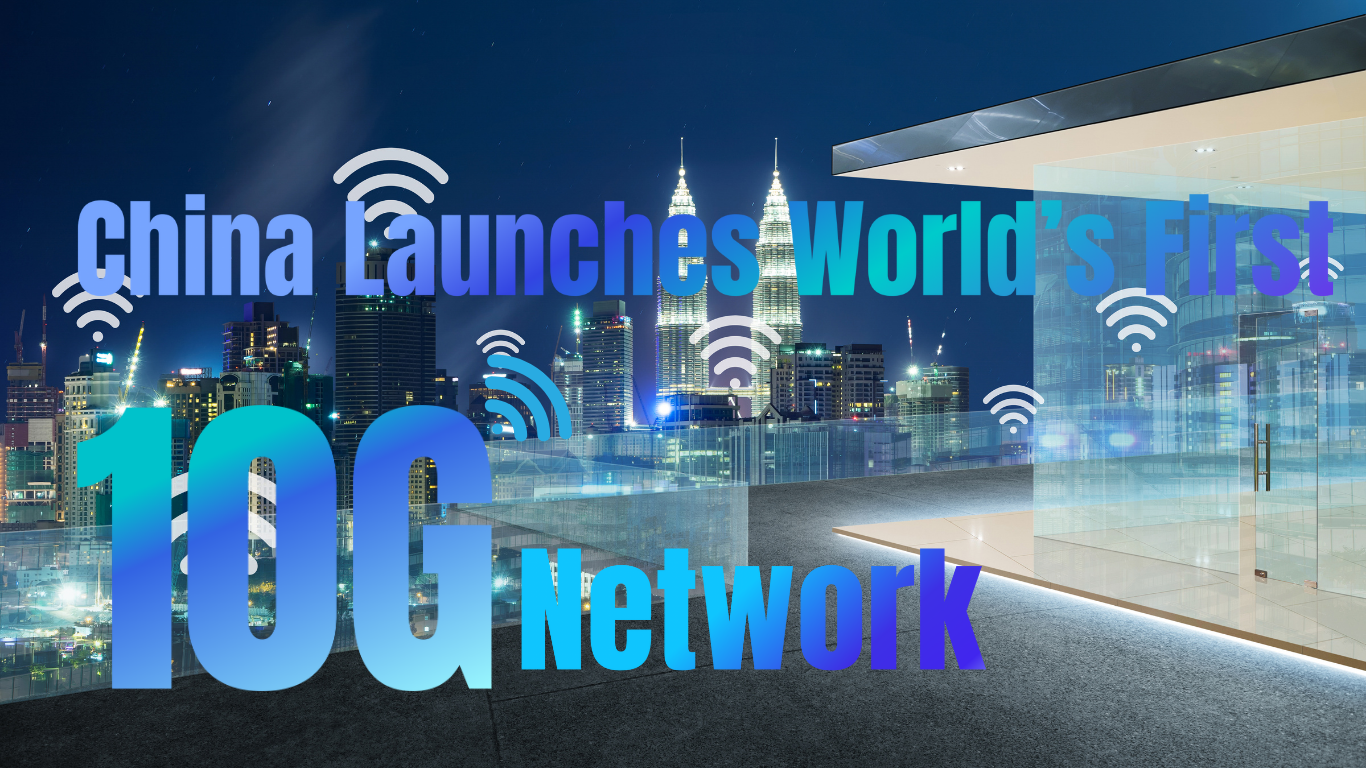The internet has just received a significant upgrade—it is now 100 times quicker!
Get over 5G. China has recently made science fiction a reality by launching the world’s first 10G broadband network, which is fast enough to outperform your current internet connection. China Mobile, in partnership with Huawei and other tech titans, debuted this next-generation network in Wuhan on April 28, 2025, with download speeds of up to 10 gigabits per second (Gbps). That isn’t just quick; it’s insanely fast, allowing you to download a complete HD movie in less than one second!
So, what precisely is 10G, and why is the world so excited about it?
What Is 10G Broadband?
No, it is not the next stage beyond 5G mobile. “G” stands for gigabit, not “generation.” Unlike mobile networks, 10G broadband is wired—think fiber-optic connections rather than cell towers. The system combines advances in optical networking, AI-powered traffic management, and ultra-low-latency infrastructure.
In basic terms? It’s a powerful home internet connection that makes your present Wi-Fi feel like dial-up.
10G Internet is way ahead of 5G, boasting speeds from 300 Mbps to 1 Gbps. Imagine downloading a full 4K movie in under a minute! With virtually no lag, it’s a game-changer for crystal-clear video calls, seamless multiplayer gaming, precision-driven remote surgeries, and ultra-responsive AI-powered smart homes.
China Mobile has chosen Wuhan as its 10G pilot city, creating a smart city ecosystem that includes self-driving cars, remote-controlled robotics, real-time 3D holograms, and cloud-AI brains, bringing science fiction to reality in Wuhan.
10G technology in China makes use of FTTR (Fiber to the Room) for seamless connectivity, Wi-Fi 7 for fast indoor speeds, advanced optical fiber transmission protocols such as XG-PON and NGPON, and AI orchestration for intelligent bandwidth distribution. This technology enables China’s network to manage millions of devices at once.
What Does This Mean for the World?
China’s launch of the world’s first 10G internet is more than just a technological victory. Crazy, right? This isn’t just a demonstration of infrastructural dominance; it’s a clear warning that the future of hyper-connected civilizations is already here. As China advances, other countries are being forced to reconsider their digital infrastructure strategy. Here’s how this breakthrough in broadband technology can impact the world:

Accelerate Smart City Development :
10G broadband provides ultra-low latency and rates of up to 10 gigabits per second, allowing smart cities to transform into self-sufficient ecosystems. This includes traffic systems that react to traffic, public safety networks that feed ultra-HD video, energy grids that respond to use spikes, and IoT devices in every public building. In a 10G era, cities become data-rich, responsive, and efficient, morphing into living organisms.
Revolutionize Healthcare, Education, and Remote Work:
10G broadband is transforming a variety of industries, including healthcare, education, and remote work. It enables surgeons to perform surgeries with robotic precision in real time, allowing for immediate data transfer and analysis. It also brings immersive VR classrooms, holographic lectures, and real-time global collaboration to rural and impoverished communities, boosting education equity. Furthermore, 10G allows professionals to work on data-intensive projects from anywhere in the world, with no compromises or latency.
Making room for the metaverse, spatial computing, and digital twins to thrive like never before:
The true metaverse requires great data throughput and real-time responsiveness, which 10G can deliver. It can support enormous virtual worlds, allowing users to interact with highly detailed avatars, real-world physics, and AI-generated surroundings in real time. This is critical for spatial computing, which necessitates a large bandwidth for monitoring movement and generating 3D scenes. Furthermore, 10G enables digital twins, which allow for real-time remote monitoring and manipulation of virtual counterparts, as well as predictive maintenance and AI diagnostics.
Support AI Infrastructure and Quantum Computing Needs:
AI and quantum computing are not just clever but also bandwidth-hungry. AI requires enormous data streams for training and real-time performance, but quantum computing relies on lightning-fast pipelines to exchange quantum states, correct errors, and seamlessly communicate with computers.
10G enables edge devices to offload duties to cloud-based AI systems, allowing for real-time results and compute power that exceeds existing network capabilities.Quantum computing necessitates ultra-fast data pipelines for state sharing, error correction, and processor linking.
China may be leading the way in internet evolution, but the fight to close the global digital divide is ongoing. 10G is more than just the next upgrade; it is the future battleground for digital dominance.
Final Thoughts: The Internet Just Got a Hyperdrive
China’s 10G launch indicates the start of a new age in internet innovation. Other countries, such as the United States, Japan, and South Korea, have already done 10G testing. Experts believe that 10G will be widely available in urban areas by 2026-2028, subject to infrastructure upgrades.
We’re not simply talking about streaming high-definition videos or downloading apps faster. We are talking about a complete revolution of digital life.
Spoiler alert: the future has already begun in Wuhan!
So the next time your Wi-Fi lags, consider that somewhere in China, people are streaming 8K movies, operating AI houses, and FaceTiming in holograms—all with no buffering.
FAQ
Q1: Is 10G better than 5G?
Yes, 10G is for fixed broadband and is up to 100 times faster than standard 5G mobile rates.
Q2: When will 10G be available worldwide?
Probably between 2026 and 2030, contingent on the growth of local infrastructure.
Q3: What should I do with the 10G that I am unable to perform at this time?
Real-time AI software, VR/AR gaming, smart home systems, remote surgeries, ultra-HD streaming, and more—all without lag.



